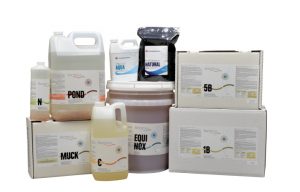Frequently asked questions about beneficial bacteria
Here you will find frequently asked questions about Bacterius® N, C, POND, EQUINOX, 1B, 5B and MUCK.
Q: Does your bacterial culture contain any harmful products?
The Bacterius® line of beneficial bacteria is produced according to the highest standards in the Quebec laboratories with which we do business.
Bacterius® products for basins and natural ponds are purely biological. They do not contain chemicals such as emulsifiers and surfactants. Opportunistic pathogens such as Pseudomonas aeruginosa, Bacillus cereus or coliforms are NEVER present in Bacterius® products. Bacterius® products NEVER contain genetically modified or deliberately mutated bacteria.
EVERY batch of Bacterius® products is analyzed using techniques derived from the food industry and accepted for use only after being certified pathogen-free and passing performance tests. Bacterius® products are approved for use in food processing facilities.
Bacterius® products not only work for you, they are also safe for you, your family and your pets or fish.

Q: What time of the year should I be using Bacterius® products?
A: It depends on where you live. Liquid Bacterius® products can be used as long as your pond is not frozen and especially as long as you feed the fish. Bacterius® in dry format should be used at water temperatures above 12 °C.
Q: Where do I add Bacterius® products?
Bacterius® products should be added near the diffusers or evenly over the water surface. For liquid products you can apply them with a sprayer. In a water garden, you can apply the bacteria in the filter or waterfall for optimal mixing.
Q: How often should I use Bacterius® products?
In general, liquid bacteria should be applied monthly and dry or pellet products weekly. Your technical advisor at CanadianPond.ca can help you determine the frequency according to the general conditions of your pond.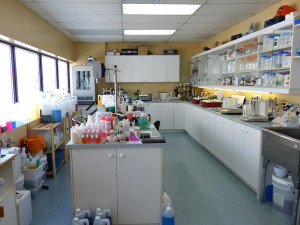
Q: Can Bacterius® harm fish or other life in the pond?
Bacterius® products are absolutely safe for fish and invertebrates.
Q: I’ve added the products but the ammonia is not coming down and the water stays green – why?
There are several conditions to verify:
- It is important to have an aeration system to provide a healthy environment for fish and beneficial bacteria.
- Control pH: The ideal pH is 7 to 8.5, but it can be acceptable between 6.5 and 8.8. Outside these limits, the activity of nitrifying bacteria is reduced.
- Check alkalinity (measured in mg/L of CaCO3 carbonates); it should be greater than 100 mg/L.
- The water must be at least 15 °C for nitrification to be effective and reduce ammonia levels.
- Also, green water can be a sign of high phosphorus levels, and phosphorus comes from fertilizers, fish food and degassing in anoxic environments. Aeration and the addition of aluminum sulphate may be necessary.
Q: Will Bacterius® N eliminate my problems with algae and green water?
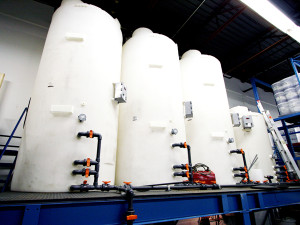 Yes, if the soluble phosphorus content is normal. Bacterius® N does not contain algaecides or other toxic products and does not kill algae. However, scientific literature indicates that appropriate bacteria use nutrients more quickly while reducing their availability to algae. This is a natural, non-chemical process. Natural processes are slower since they take at least a week, but are much less harmful to fish.
Yes, if the soluble phosphorus content is normal. Bacterius® N does not contain algaecides or other toxic products and does not kill algae. However, scientific literature indicates that appropriate bacteria use nutrients more quickly while reducing their availability to algae. This is a natural, non-chemical process. Natural processes are slower since they take at least a week, but are much less harmful to fish.
Q: How do I know Bacterius® is working?
There will be greater visibility in the pond, and there will be improved water quality, which can be monitored, with test kits, in terms ammonia, nitrite, and nitrate. Sludge accumulations will also decrease.
Q: Will Bacterius® help reduce diseases of in the fish?
Indeed, regular use of Bacterius® N and C helps to maintain good water quality and reduces fish stress (ammonia and nitrite being responsible for stress), thus making fish more resistant to infections. Moreover, regular use of Bacterius® protects fish through the probiotic effect while ensuring the presence of a high number of beneficial microorganisms, thus limiting the niche for the development of pathogenic bacteria that remain in the minority. Keeping the environment saturated with beneficial bacteria is based on the same principle as eating yogurt made of active cultures to maintain a good intestinal flora.
Q: How long does Bacterius® last once the bottle is opened?
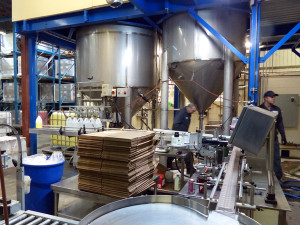 The bottle must be used within three months after opening. As for dry bacteria, they can be kept for several years in a dry and frost-free environment.
The bottle must be used within three months after opening. As for dry bacteria, they can be kept for several years in a dry and frost-free environment.
Q: Is it possible to over-dose with Bacterius®?
No, but one should always follow instructions.
Q: How does Bacterius® work?
Regular use of Bacterius® N and POND ensures the presence of a balanced community of bacteria that improves water quality. This team of bacteria acts synergistically to improve water quality by controlling ammonia and nitrite. To do this, the nitrifying bacteria transform ammonia into nitrite, which is then transformed into nitrate, a form that is less toxic to aquatic life.
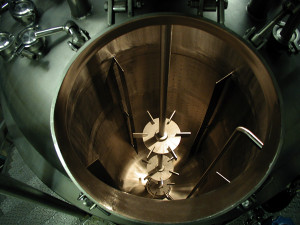
Bacterius® C, 1B, 5B and MUCK ensure the presence of a community of bacteria that allows the reduction of organic waste (sludge, fish waste, etc.). The product eliminates the causes of foul odors such as H2S. It allows to keep a pond free of organic sludge or to gradually reduce the accumulation of organic sludge in an aging pond.
Q: Can I mix Bacterius® with chemicals in the pond?
Some chemicals are dangerous for bacteria. Read the instructions on the chemical in question to find out. NEVER mix different products in the pond, even if you use them at the same time. If in doubt, contact your technical advisor before applying products to your pond.
Q: What time of the day should bacteria be added?
Bacterius® can be added at any time of the day.
Q: How long before they begin to work?
Mud reduction begins immediately, but other processes are slower and start when the microorganisms come out of their dormancy. This biological treatment is slower than the chemical treatment, but it does not pose a risk to the fish and the environment. Positive results will be observed after a few days to a week, depending on environmental conditions such as temperature, pH and aeration.
Q: Some users of Bacterius® N have noted a rapid decrease in nitrite. How is this possible?
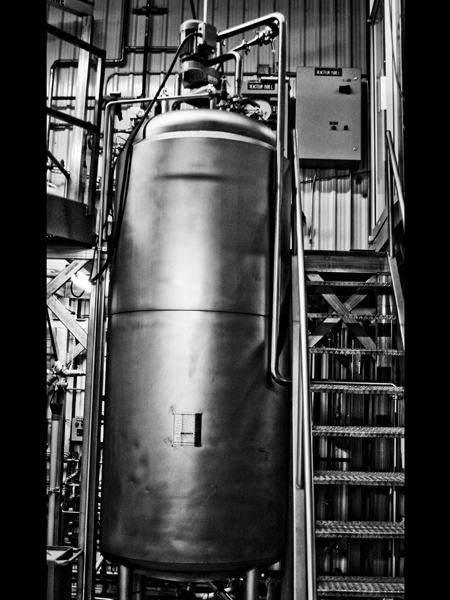 Bacterius® N contains microorganisms capable of converting and removing nitrite and ammonia. Ammonia is converted into nitrite and then into nitrate by the nitrifying bacteria, and into nitrogen gas by the denitrifying bacteria.
Bacterius® N contains microorganisms capable of converting and removing nitrite and ammonia. Ammonia is converted into nitrite and then into nitrate by the nitrifying bacteria, and into nitrogen gas by the denitrifying bacteria.
Q: How do Bacterius® products digest proteins?
Bacterius® products, with the exception of N, digest sludge, cellulose and protein by breaking long chains of molecules into smaller fractions, such as amino acids, which are soluble in water. They also solubilize fats by converting them into fatty acids. These protein, fat and sludge by-products are converted by the bacterial community into bacterial biomass, carbon dioxide and water. The bacterial biomass then becomes a natural food for fish and invertebrates.
Q: What happens to the solubilization of nutrients?
Nutrients that are solubilized by the enzymes produced by bacteria are not only used by these microorganisms, but also by those that cannot produce enzymes themselves. This is the principle of water purification through a balanced bacterial community.
Q: Are water changes necessary when using Bacterius® in a small pond? And if the water needs to be changed, how often should it be changed?
Yes. Bacterius® products help improve water quality, but this does not prevent evaporation which leads to increased salt concentrations. A water change of 10% per week is often recommended. Use this water to irrigate your garden, as this provides nutrients for your plants and the water is at an ideal temperature. Fill your pond with tap water; small amounts of chlorine are not a problem if you only add 10%. You can also use rainwater.
Q: How do fish medicines affect bacteria?
The inhibitory effects of medications vary widely. It is best to isolate the biological filter from the rest of the pond or pause bacteria applications during medication treatment. When the use of medication is necessary, the best method, used in aquaculture, is to feed the fish with antibiotics-treated feed. Activated carbon can be useful to remove various chemicals from the water after treatment.
Q: Why is it necessary to add Bacterius® products continuously?
There are several reasons why it is necessary to add Bacterius® on a regular basis. Our work in aquaculture and water treatment has shown that the peak in beneficial bacteria does not persist for more than a week after their last injection. These bacteria are specialized in organic matter breakdown, not necessarily at surviving in all environments. Bacteria are at the bottom of just about every food chain on the planet. So when our bacteria die, the indigenous, well adapted bacteria out-compete them for the space. Regular intakes of Bacterius® N and C ensure the renewal of a balanced community of water purification bacteria.
Recent studies in the literature have shown that bacterial growth can reduce pathogens in the aquatic environment by dilution due to the addition of high concentrations of beneficial microorganisms. A regular supply provides sufficient quantities of bacteria to fill the niches normally used by pathogens. This is called the probiotic effect.
Q: What is the difference between the bacteria in Bacterius® products and the bacteria in the pond?
Bacterius® products contain communities of microorganisms that specialize in water purification. Scientific literature has shown that some of the bacterial community is not always present in nature. This is partly the reason why sedimentation is often more important than decomposition in lakes and ponds and this is what causes silting. By promoting decomposition, the Bacterius® system provides good results in lake restoration, aquaculture and wastewater treatment.
Q: Do bacterial populations change with pH?
Not significantly. Different bacteria preferentially grow in different environmental conditions. A good example is the bacteria involved in the production of yogurt. These bacterial strains grow well at low pH; the acid that is generated inhibits other bacteria. Bacterius® products are designed for the pH ranges encountered in aquatic systems. The quantity of bacterial strains present in Bacterius® products can change with pH, but in principle, these microorganisms have sufficient flexibility to obtain the desired results at the pH intervals normally found in ponds.
Visit our online shop to download Tech Sheets and/or SDS for each products
Related Article:
